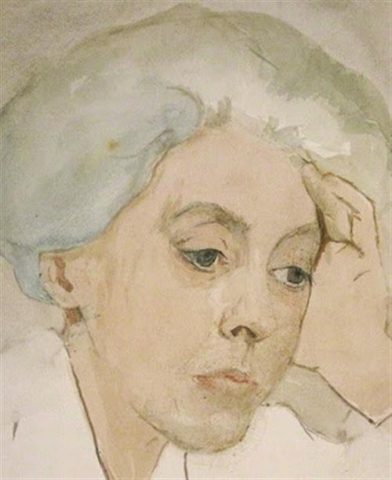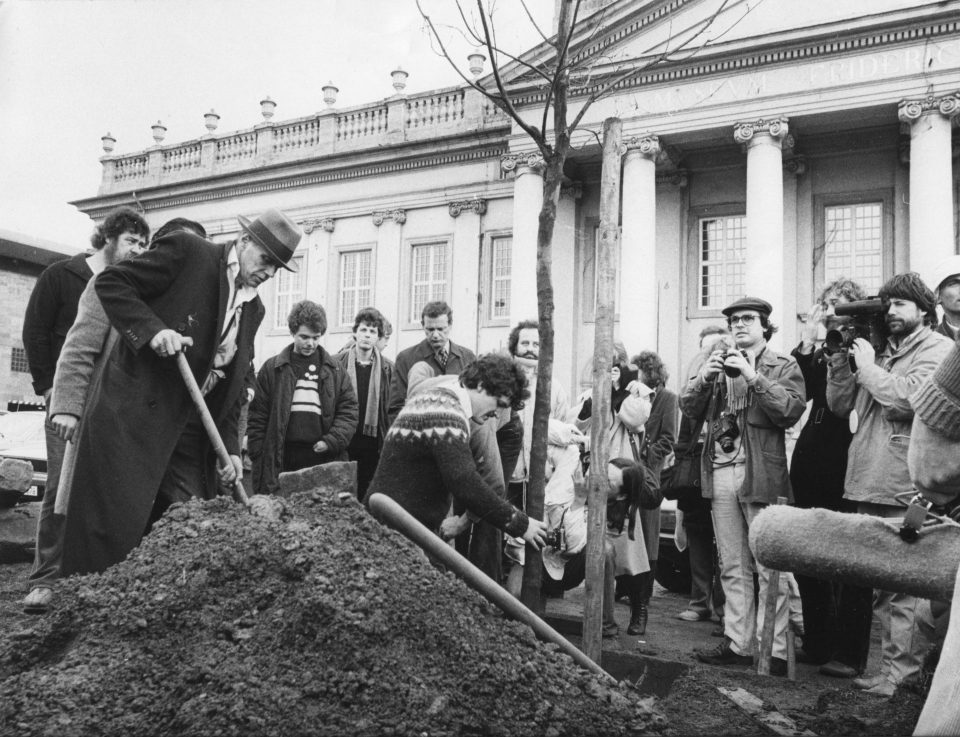Do Trees Have Feelings?
24th October 2014The World’s First Tree Preservation Order
1st December 2014Charlotte Mew on Men and Trees

Today we are increasingly aware of the importance of urban forestry to human mental and spiritual well-being. The prose and poetry of Charlotte Mew (1869-1928) was such thinking.
Charlotte lived, for the most part, in poverty and despair. Tormented by her brother’s and sister’s mental illness, which confined them to asylums and early death; she vowed never to marry as she feared she might carry a hereditary mental illness, and this fear and grief ultimately led to her suicide. Despite this, she produced poems of unique beauty and passion. Thomas Hardy wrote that Charlotte Mew was “far and away the best living woman poet, who will be read when others are forgotten.”
Charlotte clearly regarded herself very much as an urban person, but understood that trees played an indispensable role in urban life. In her poem The Trees are Down she creates vivid images of urban trees being removed and explains how upset she feels about it; for any hard-nosed arborist struggling to empathise with an upset member of the public, it should be required reading:
They are cutting down the great plane-trees at the end of
the gardens.
For days there has been the grate of the saw, the swish of
the branches as they fall,
The crash of the trunks, the rustle of trodden leaves,
With the ‘Whoops’ and the ‘Whoa’, the loud common talk,
the loud common laughs of the men, above it all.
The poem ends:
It is going now, and my heart has been struck with the
hearts of the planes;
Half my life it has beat with these, in the sun, in the rains,
In the March wind, the May breeze,
In the great gales that came over to them across the roofs from the great seas.
There was only a quiet rain when they were dying;
They must have heard the sparrows flying,
And the small creeping creatures in the earth where they were lying –
But I, all day, I heard an angel crying:
‘Hurt not the trees.’
They are cutting down the great plane-trees at the end of
the gardens.
For days there has been the grate of the saw, the swish of
the branches as they fall,
The crash of the trunks, the rustle of trodden leaves,
With the ‘Whoops’ and the ‘Whoa’, the loud common talk,
the loud common laughs of the men, above it all.
The poem ends:
It is going now, and my heart has been struck with the
hearts of the planes;
Half my life it has beat with these, in the sun, in the rains,
In the March wind, the May breeze,
In the great gales that came over to them across the roofs from the great seas.
There was only a quiet rain when they were dying;
They must have heard the sparrows flying,
And the small creeping creatures in the earth where they were lying –
But I, all day, I heard an angel crying:
‘Hurt not the trees.’
Her writing about trees reaches a peak in her essays Men and Trees, where she gives a polemical account of the importance of trees in relation to people; placing them in their historical and cultural context with a particular emphasis on the negative impact of the mismanagement of urban trees.
The London trees are all prisoners of men, some unreasonably mutilated like the lopped crowd in Greenwich Park, while, now and then, there is a wholesale massacre such as that of the seven hundred in Kensington Gardens, which took place, no one knows why, some thirty years ago, against which even the executioners protested and perhaps the homeless rooks as vainly. In my own wooded neighbourhood one after another falls; progress pulls down the old spacious shabby houses and puts up flats for the half-world; a popular draper rears a proud red monument to success; the green vanishes: even tomorrow one may miss the familiar plane of yesterday, and the birds go with the trees.
You are looking at something’, said my blind friend quietly. ‘Not here’, I told him.
“It was a tree outside the British Museum they were felling last week, with all the instruments of butchery, the axe and the rope and the saw, and the clearing round it like a scaffold; it went on for days and I didn’t altogether care for it.”
‘No,’ he agreed, with sudden animation,
“I really can’t bear to see a tree cut down – a big tree: it’s a sort of sacrilege. I suppose we belong, of course we do – I anyhow – to the Dark Ages.” …
How happy the trees must be to hear the song of the birds again in their branches. After the silence and the leaflessness to have the birds back once more – to feel them busy at the nest-building” …
Of old time the tree was the pillar of the temple. It is a clear echo of, the earliest true cults, this, to hear – to feel – to have the birds; a return to the day when the tree was a sentient being with a soul of its own, or when later it became the abode or haunt of the spirit. The steeples are empty. Here is his inherent Paganism: ages before the steeples the primeval church was the foThe Trees are Downrest, and the secret of all things was within or behind a tree…
The oldest inhabited world, as we look back on it from our cleared spaces, is a dense and infinite forest, a world of tree-haunted men and men-haunted trees…
One may read whole libraries about the tree. Tree-myth, tree-marriage, tree-burial, tree-murder (under ‘Forestry’), shelf upon shelf of books, dreams analysed and prayers dissected, millions of words strewn round it like its own dead leaves, and outside these stands the living tree, aloof, splendid; as magical as it was before one of them was written; and sometimes – there is always this about the city tree and the trees of commerce, and those forlorn ones grouped round a deserted house-something tragic and touching too….
And this beauty. The scientist puts it into schedules and cuts sections of it and labels specimens for museums, and while he is busy the soul of it makes a little journey and comes back when he has gone to bed. No soul can breathe buried alive beneath the weight of all these tabulated facts.





